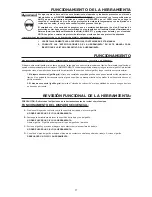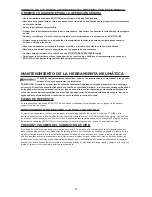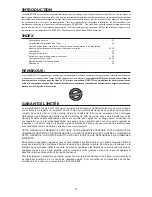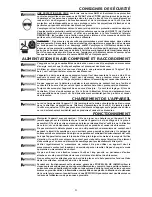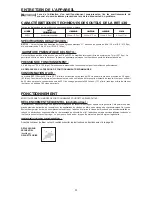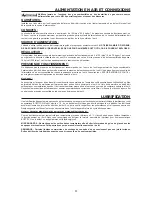
8
TOOL OPERATION
EYE PROTECTION which conforms to ANSI specifications and provides protection against
flying particles both from the FRONT and SIDE should ALWAYS be worn by the operator and
others in the work area when connecting to air supply, loading, operating or servicing this
tool. Eye protection is required to guard against flying fasteners and debris, which could
cause severe eye injury.
The employer and/or user must ensure that proper eye protection is worn. Eye protection
equipment must conform to the requirements of the American National Standards Institute,
ANSI Z87.1 and provide both frontal and side protection. NOTE: Non-side shielded
spectacles and face shields alone do not provide adequate protection.
BEFORE HANDLING OR OPERATING THIS TOOL:
I.
READ AND UNDERSTAND THE WARNINGS CONTAINED IN THIS MANUAL.
II. REFER TO “TOOL SPECIFICATIONS” IN THIS MANUAL TO IDENTIFY THE
OPERATING SYSTEM ON YOUR TOOL.
OPERATION
SEQUENTIAL TRIP OPERATION (GRAY TRIGGER):
The Sequential Trip (gray trigger) gets its name from the “sequence” required to drive a fastener. To drive a
fastener, the operator must first depress the “trip” FULLY against the work surface and then pull the trigger. To
drive a second nail, the operator must lift the tool from the work surface, release the trigger and then repeat the
above sequence.
1. The Sequential Trip (gray trigger): offers a positive safety advantage since it will not accidentally drive
a fastener if the tool is bumped against any surface or anybody while the operator is holding the tools with
the trigger pulled.
2. The Sequential Trip (gray trigger): allows “place nailing” without the possibility of driving a second,
unwanted fastener on recoil.
TOOL OPERATION CHECK:
CAUTION: Remove all fasteners from tool before performing tool operation check.
SEQUENTIAL TRIP OPERATION:
A. Press the contact trip against the work surface, without touching the trigger.
THE TOOL MUST NOT CYCLE.
B. Hold the tool off the work surface and pull the trigger.
THE TOOL MUST NOT CYCLE.
Release the trigger. The trigger must return to the trigger stop on the frame.
C. Pull the trigger and press the contact trip against the work surface.
THE TOOL MUST NOT CYCLE.
D. With finger off the trigger, press the contact trip against the work surface. Pull the trigger.
THE TOOL MUST CYCLE.

















